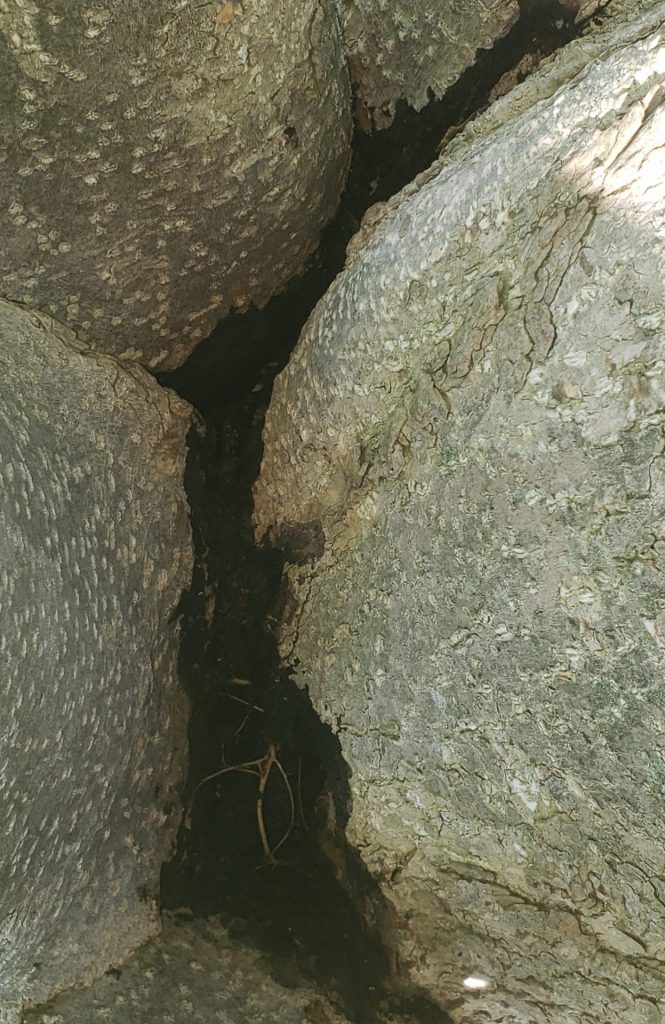
We have a very old beautiful white Magnolia tree. It was blooming nicely and looks healthy so far. However on the base it is black and wet. We removed some dirt . But still it doesn’t dry out since a few weeks. See pictures attached. Is this something to be concerned of?
It is difficult to diagnose exactly what ails your Magnolia simply from your photo, but a couple of things do spring to mind.
Most optimistically this may be a case of Sooty mold. Sooty mold is more of a symptom than the cause of the problem, it is in fact the by product of another problem: Insects such as whitefly or aphids suck the sap of the tree, the insects extract “honeydew” a sugary substance that falls upon various parts of the tree, a dark “sooty” mold then grows on that part of the tree. The solution to the problem may be as simple as addressing the insects, either white fly or aphids. A careful examination of the tree including new growth will let you know if you indeed have these pests.
Another answer may be that your tree is a victim of Bacterial wet-wood. This is a bacterial infection which causes parts of the tree to become wet with ooze that seeps through the wood. This ooze causes the bark to crack and discolour. You can usually confirm this diagnosis by a foul odour coming from the ooze. Usually this is not a worse case scenario as improving the vigour of the tree can help it heal, but if as you describe the symptoms are occurring at the base of the tree, this could be worrying.
Most worrisome is Armillaria root rot. This is a soil borne fungal disease that attacks stressed or weak trees through their root system and causes the decay of the tree’s bark. One of the symptoms is oozing from the trunk, another is the appearance of white coloured fungus and mushrooms at the base of the tree. Unfortunately there is no cure for this disease and it would lead to the eventual death of the tree. So hopefully this is not your situation.
I am including several links that may help you diagnose this problem, and hopefully a solution. I would encourage you to contact an arborist who can give you a conclusive answer. I have also included a link to landscape Ontario for help finding an arborist. I wish you luck and continued enjoyment of this beautiful tree.
https://extension.psu.edu/bacterial-wetwood-or-slime-flux

